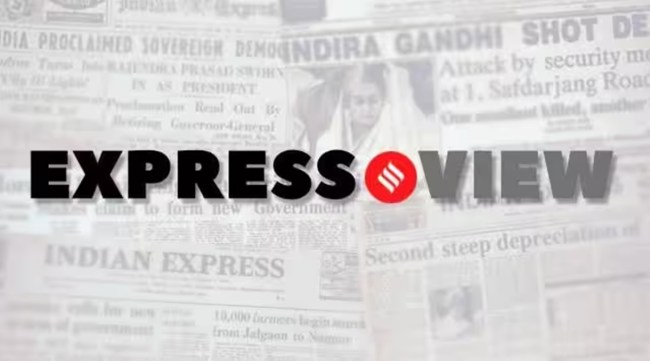Opinion Express View on political crossovers into BJP: One by one
Movement of leaders, parties only in one direction, BJP’s, ahead of an important election, points to realpolitik with gloves off
 In Bihar, Nitish Kumar's JD(U), a flag-bearer of Mandal politics, which was also being seen as a pillar of the national Opposition front, has walked back into the saffron fold.
In Bihar, Nitish Kumar's JD(U), a flag-bearer of Mandal politics, which was also being seen as a pillar of the national Opposition front, has walked back into the saffron fold. Three high-profile desertions from INDIA and Congress and cross-overs to the BJP-led NDA, in quick succession in the run-up to parliamentary polls, underscore the state of political play. In Bihar, Nitish Kumar’s JD(U), a flag-bearer of Mandal politics, which was also being seen as a pillar of the national Opposition front, has walked back into the saffron fold. In UP, the RLD, rooted in an agrarian politics that was once seen, in local contexts, as a countervailing force to Hindutva, has tied up with the NDA. And in Maharashtra, former chief minister, Ashok Chavan, after 38 years in Congress, and having been targeted for alleged corruption by the BJP, has cast his lot with the BJP. All three highlight the BJP’s predatory politics — the party is determined to not just put together the numbers, but also to shore up total domination. But they also turn the spotlight on the continuing deshabille of Congress and the unchecked shrinking of INDIA even before it is fully formed.
The contrast only grows starker as the general election draws closer. The BJP shows agility and political imagination, and uses carrot as well as stick, weaponising its control of Central agencies like the ED-CBI now, and strategically holding out the Bharat Ratna then, to court parties and fold in constituencies that are not traditionally counted as its own, in order to spread its net wider, expand and layer its appeal. In Maharashtra, Chavan’s switch follows the split of both the Shiv Sena and the NCP, one of the two halves of both aligning with the BJP. And the latest Bharat Ratna announcements at the national level — Karpoori Thakur, P V Narasimha Rao and Charan Singh — underline the BJP’s incursions into political territory once thought to be dominated by ideologically differing if not antagonistic forces. This is after it has sealed its “core” promise of a Ram temple at Ayodhya with the grand consecration. On the other side, Congress is not all there to either guard its base or stitch up seat-sharing with potential INDIA allies — because its top leader Rahul Gandhi, who may no longer be party president but still runs the show, is on an ill-timed yatra. In a critical time, this manifests in a lack of urgency and unconscionable delays in the party’s decision-making. The AAP has already said that it will go it alone in Punjab and made a take-it-or-leave-it offer to Congress in Delhi. And in West Bengal, Mamata Banerjee has predicted, unflatteringly, that Congress may not win even 40 LS seats.
The unchecked weakening of the Opposition bodes ill for a democracy that, at any given point, and whichever the party or parties in government, requires a competitive polity to be the best version of itself. The movement of leaders and parties only in one direction, ahead of an important election, points to a realpolitik with gloves off, and to a polity in search of a new equilibrium.






